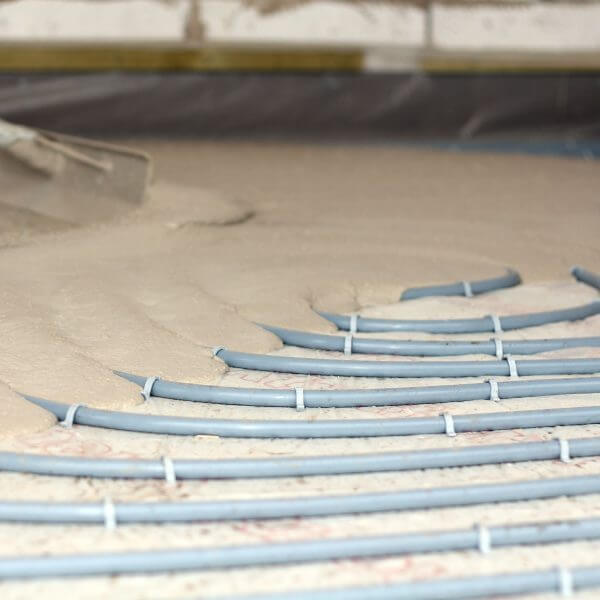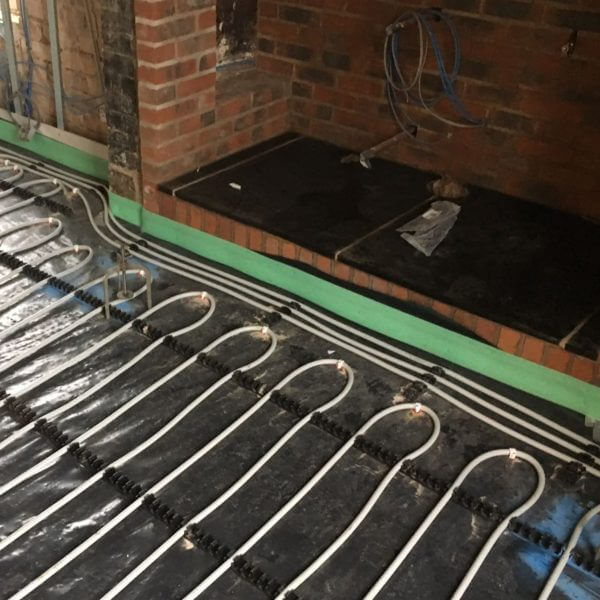Preparation For Floor Screed
Liquid Screed should only be laid on a suitably well-prepared substrate. The screed can either be laid bonded or floating over a separating polythene layer (usually a 500 gauge.) The separation layer can be either thermal or acoustic insulation. Edge strips are recommended around the perimeters, hard standing or pipes and joints placed where appropriate. Screed height is established by laser level from a datum and tripods across the floor.
Preparation is the key to successful installation, ensuring the groundwork and the best floor for underfloor heating from the start. This process can involve moisture testing and then providing a smooth, level surface, before the installation of underfloor heating for bathrooms, kitchens, and other solid floorings. Easyflow can supply and fit the materials required to prepare your floor for a liquid screed.
What is Bonded Screed?
Bonded screed is floor screed laid and bonded directly to the concrete subfloor. This is done to create high-strength screed that will not separate from the subfloor.
What is Floating Screed?
Floating screeds are not directly connected to the concrete subfloor. They are usually separated with damp-proof membranes and insulation to improve the floor’s energy efficiency.
Floor Insulation
Thermal and acoustic insulations are supplied and fitted if required. We highly recommend it, as it improves the energy-efficient performance of underfloor heating solutions by minimising heat loss.
Polythene Damp-Proof Membrane
It is necessary to create a barrier between the foil backing on the floor insulation and the floor screed. It also tanks the room as the screed is so fluid. Without the polythene, a reaction may occur, affecting the structural integrity of the screed.
Can Screed Cause Damp?
Screed cannot cause damp, but it can become damp if the subfloor has not been properly prepared with damp proof membranes and floor insulation. It can also become damp if you have not allowed the screed to dry sufficiently.
Perimeter Expansion Foam
This is necessary as there is some contraction and expansion within the screed usually within the first 24 to 48 hours of curing.
Does Liquid Screed Need Expansion Joints?
Yes. Expansion joints allow floor screed to expand and shrink in a manner that would avoid the screed cracking. Without expansion joints, dried screed may suffer significant cracks that can ruin the floor finish over it.




Where To Find Us